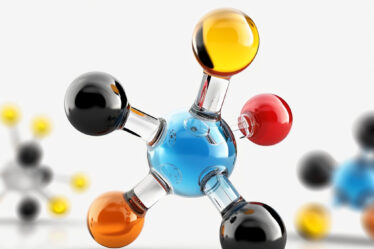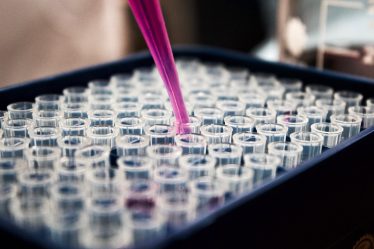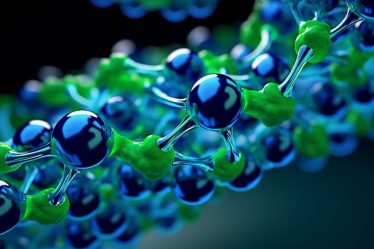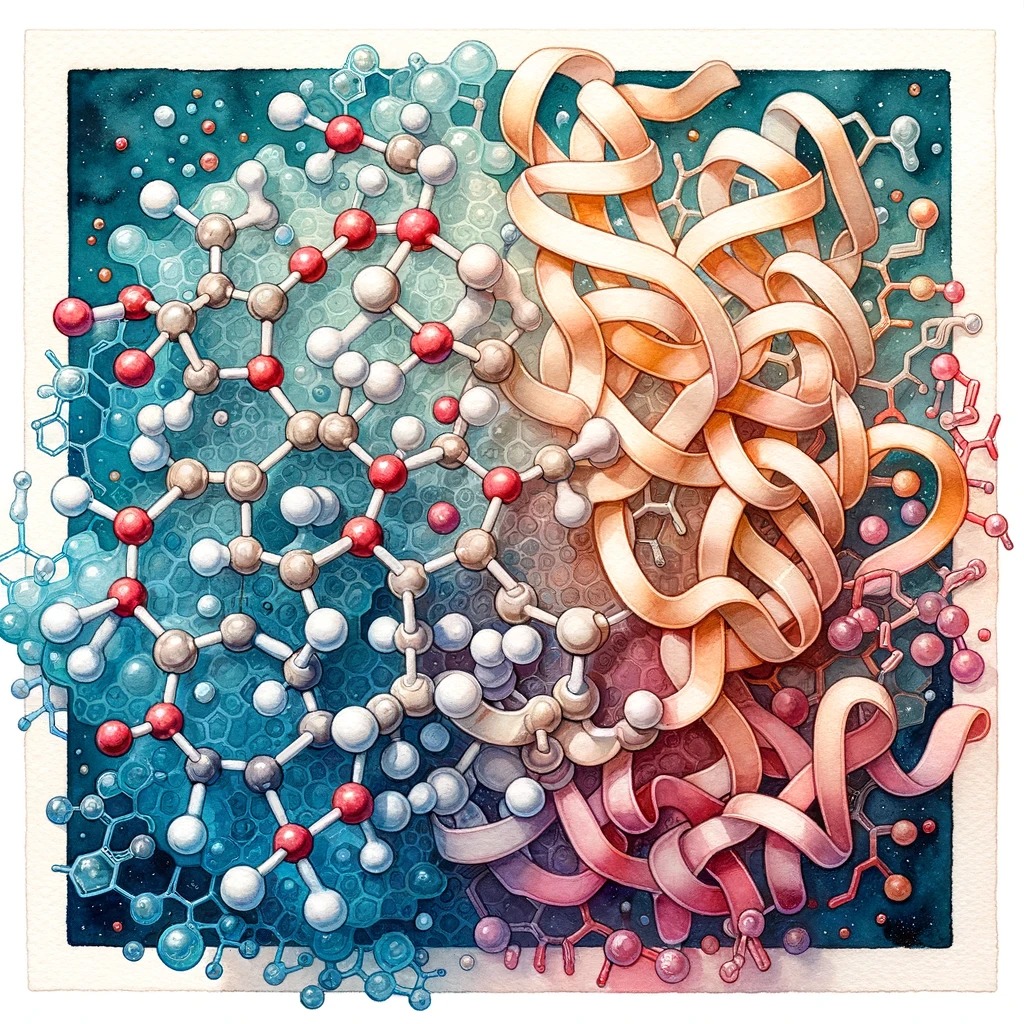
Welcome to this comprehensive guide on enzymes, the catalysts that regulate the rate of biochemical reactions in living organisms. These biological marvels are indispensable for various metabolic processes, from digestion to energy conservation.
Here’s a glimpse of what you’ll learn:
- Enzyme Functions in Biochemical Reactions
- Enzyme Structure and Substrate Interaction
- Types of Enzymes in Metabolic Pathways
- Factors affecting enzyme activity
- Applications in industry and medicine
- Tutoring for learning comprehension
Whether you’re a student seeking lessons< to complement your classes or someone intrigued by biochemistry, this guide is your private teacher through the intricate world of enzymes. Many inherited human diseases, like albinism and phenylketonuria, result from enzyme deficiencies, underscoring their importance.
Want to expand your chemistry horizons? Our World of Chemistry offers a plethora of free educational blogs.
Discover your ideal chemistry tutor at meet’n’learn and skyrocket your understanding to new heights!
What Are Enzymes?
Enzymes are specialized proteins that act as catalysts in biological systems. They accelerate the rate of biochemical reactions without undergoing any change themselves. Imagine a busy kitchen where a chef efficiently coordinates various tasks. Similarly, enzymes orchestrate a multitude of biochemical reactions within living organisms.
These remarkable molecules are essential for life as we know it. Without enzymes, many biochemical reactions would occur at such slow rates that they would be virtually imperceptible. They are the conductors of the cellular symphony, ensuring that reactions occur when and where they are needed.
Enzymes are not one-size-fits-all; they are highly specific. Each enzyme is tailored to catalyze a particular reaction or set of reactions. This specificity is due to their unique three-dimensional structures, which we will explore in more detail in the next chapter.
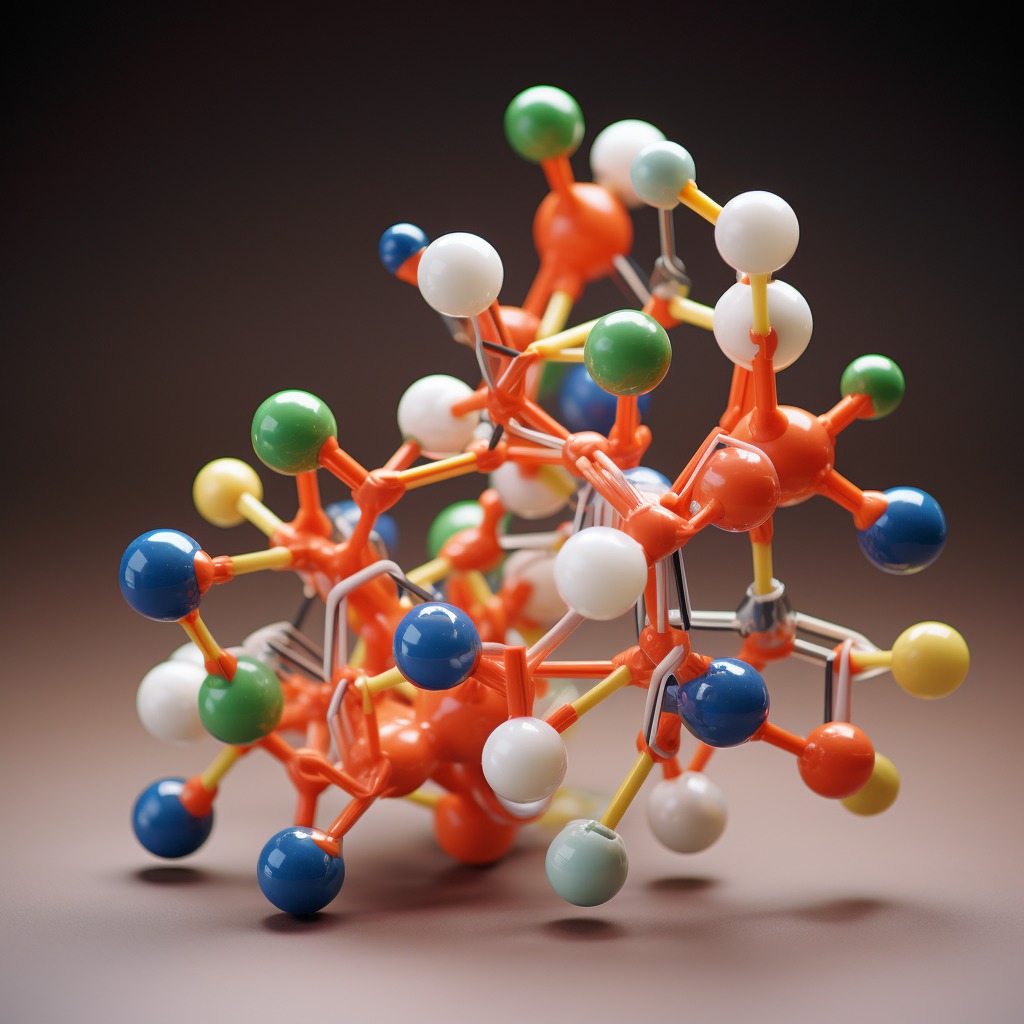
What Enzymes Do: Catalysts in Biological Systems
An enzyme is a biological catalyst, meaning it speeds up chemical reactions in living organisms. Catalysts are substances that increase the rate of reactions without being consumed or altered. In the biological context, enzymes play a critical role in regulating the speed at which these reactions occur, making them indispensable for cell metabolism.
Enzyme Functions in Metabolic Reactions
Enzymes are the linchpins of metabolism. They facilitate various metabolic pathways, including the digestion of food, energy conservation, and the construction of cellular macromolecules. For instance, enzymes break down large nutrient molecules like proteins, carbohydrates, and lipids into smaller, more manageable molecules. This is crucial for the body’s energy production and nutrient absorption.
Examples of Enzymes in Everyday Life
Some well-known enzymes include amylase, which breaks down starches; lipase, responsible for fat digestion; and lactase, which helps digest lactose. These enzymes are not just confined to the digestive system; they are ubiquitous and perform many bodily functions.
Understanding enzymes can be complex, but these biochemical topics become much more approachable with the right tutoring. Whether you’re taking classes or seeking private lessons, a deeper understanding of enzymes can be incredibly enlightening.
Discover how Hydrogen Bonds and Covalent Bonds are formed, and learn to Differentiate Them from Ionic Bonds.

Enzyme Structure: The Blueprint of Biological Catalysts
When it comes to understanding enzymes, knowing their structure is paramount. Think of enzymes as intricate machines, each designed for a specific task. Their structure isn’t just a random assembly; it’s a meticulously organized architecture that dictates their function. A slight alteration in this structure can profoundly impact an enzyme’s effectiveness like a faulty gear can disrupt an entire machine.
Proteins: The Building Blocks of Enzymes
At their core, enzymes are primarily composed of proteins. These proteins fold into complex three-dimensional shapes, creating specialized pockets known as active sites. It’s within these active sites that the real magic happens. Here, enzymes interact with their substrates, the molecules they act upon, initiating a cascade of biochemical reactions essential for life.
Proteins are not just the primary component but the essence of enzymes. The sequence of amino acids in a protein determines how it folds, and this folding pattern, in turn, determines the enzyme’s function. It’s a beautiful example of how form meets function in biological systems.
Active Sites and Catalytic Sites: The Heart of Enzyme Activity
The active site is the region of the enzyme where substrate molecules bind and undergo a chemical reaction. This site is highly specific, ensuring the enzyme interacts only with particular substrates. The catalytic site, a subset of the active site, is directly involved in catalyzing the reaction. It’s like a lock and key mechanism where the active site is the lock, and the substrate is the key. Only the correct key can open a specific lock, ensuring specificity in enzyme-substrate interactions.
Active sites are not just static structures; they can change shape to accommodate their substrates better, a phenomenon known as induced fit. This flexibility allows enzymes to catalyze a wide range of reactions, making them incredibly versatile.
Cofactors and Prosthetic Groups: The Unsung Heroes
While enzymes can perform many tasks independently, some require a little help. Enter cofactors and prosthetic groups. Cofactors are non-protein molecules that assist in the enzyme’s catalytic activity. Prosthetic groups are tightly bound molecules that form a permanent part of the enzyme, often facilitating its function.
Understanding the structure of enzymes can be a complex endeavor. However, effective tutoring can simplify these intricate biochemical topics. Whether enrolled in classes or seeking private lessons, a deeper comprehension of enzyme structure can be invaluable for your academic journey.
Check out 8 Exciting Science Experiments for Kids and unravel The Greatest Discoveries in Biology.
Types of Enzymes: A Comprehensive Guide
Enzymes are not a monolithic group; they come in various types, each with its specific function and role in biological processes. Understanding the different types of enzymes can be complex. However, these biochemical topics become much more approachable with the right tutor.
- Hydrolases: Catalyze hydrolysis, breaking down molecules using water. Essential for digestion and metabolism.
- Isomerases: Rearrange atoms within a molecule without breaking or forming new bonds. Important for metabolic pathways.
- Oxidoreductases: Manage oxidation-reduction reactions, transferring electrons between molecules. Vital for cellular respiration and energy production.
- Transferases: Transfer functional groups from one molecule to another, enabling cellular functions and energy transactions.
- Ligases: Join two molecules by forming a new chemical bond, usually consuming energy. Crucial for DNA replication and macromolecule synthesis.
- Lyases: Break chemical bonds other than by hydrolysis and oxidation. Involved in biosynthetic pathways like vitamin formation.
The basics of Polymers.
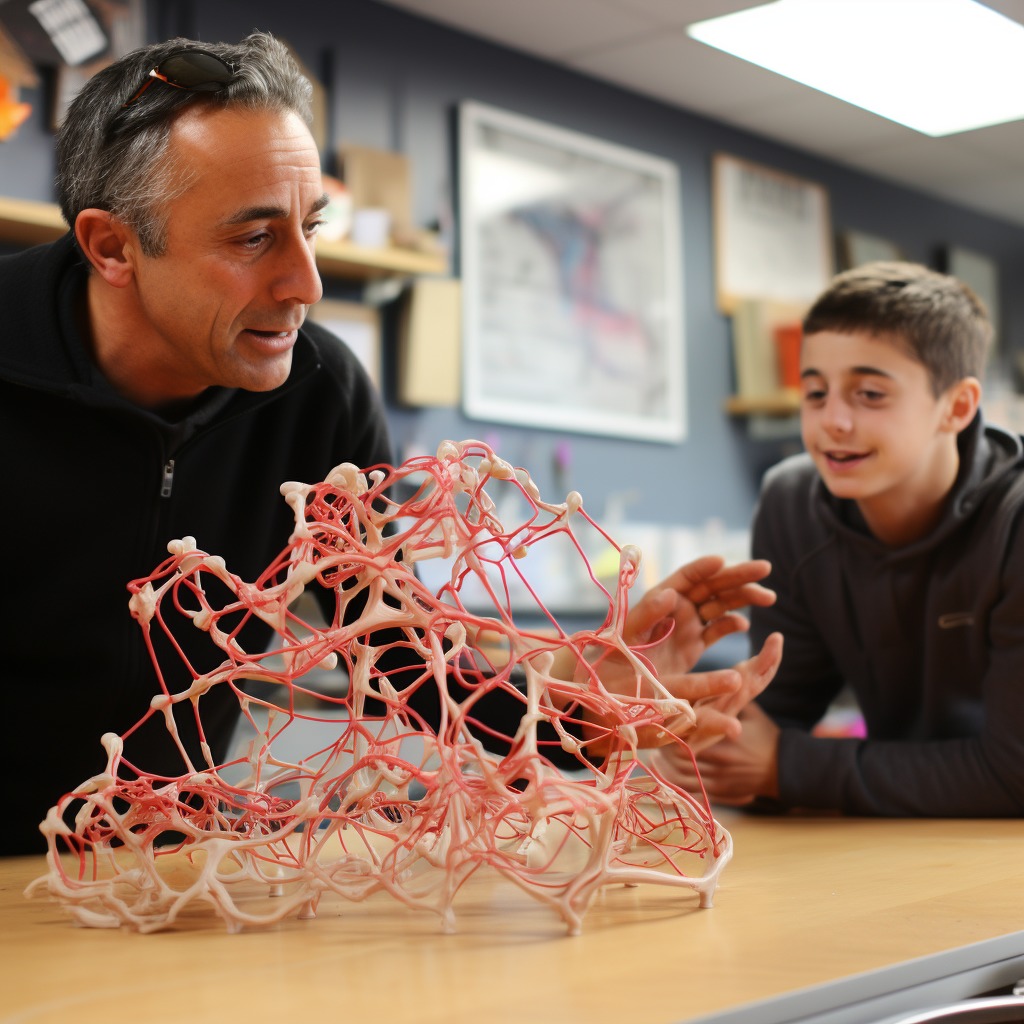
Factors Affecting Enzyme Activity: The Delicate Balance
Enzymes are not just biological workhorses; they are sensitive entities whose activity can be influenced by various factors. Understanding these factors is crucial for both academic and practical applications. Whether you’re taking classes or seeking private lessons, a deeper understanding of these factors can be incredibly enlightening.
Substrate Concentration: The Starting Point
The rate of an enzymatic reaction often increases with the concentration of the substrate up to a point. The enzyme is saturated when all active sites of the enzyme are engaged with substrate molecules. Beyond this point, adding more substrate won’t speed up the reaction. This is because the rate depends solely on the enzyme’s ability to convert substrate to product.
Temperature: The Heat Factor
Temperature plays a significant role in enzyme activity. Each enzyme has an optimal temperature range where it functions most efficiently. Too low a temperature can slow down the reaction, while too high a temperature can denature the enzyme, rendering it inactive.
pH Levels: The Acid-Base Balance
Like temperature, each enzyme has an optimal pH level. Deviating from this optimal pH can reduce enzyme activity or denaturation. For example, enzymes in the human stomach operate best at acidic pH-levels, while those in the small intestine prefer a more alkaline environment.
Competitive and Non-Competitive Inhibition
Enzyme activity can also be inhibited by molecules interfering with the enzyme’s active site. Competitive inhibition occurs when a molecule similar to the substrate binds to the active site, preventing the actual substrate from binding. Non-competitive inhibition, on the other hand, occurs when an inhibitor binds to a location other than the active site, altering the enzyme’s shape and making it less effective.
Allosteric Control: The On/Off Switch
Some enzymes are regulated through allosteric control, where a molecule binds to a site other than the active site, affecting the enzyme’s activity. This can either stimulate or inhibit the enzyme’s function, serving as a form of cellular regulation.
Explore Halogenides, Sulfides, and Hydroxides.
Practical Applications of Enzymes: Real-World Uses
Enzymes have a variety of practical applications that extend beyond the academic realm:
- Digestive System: Amylase, lipase, and protease break down complex food molecules for easy absorption.
- Medical Field: Lactase is used in lactose intolerance treatments, and trypsin is employed in wound debridement.
- Industrial Uses: Enzymes accelerate fermentation in beer brewing, break down stains in textiles and detergents, and assist in pulp processing in the paper industry.
- DNA Processes: DNA polymerase and helicase are essential for DNA replication and repair.
- Environmental Protection: Enzymes are used in water treatment to break down pollutants.

The Role of a Tutor in Understanding Enzymes
A tutor can be an invaluable resource for grasping the complexities of enzymes. A tutor provides personalized guidance, helping you navigate through intricate biochemical topics. They can break down complicated concepts into digestible information, making it easier for you to understand the subject matter.
Moreover, a tutor can offer targeted exercises and real-world examples that make the theoretical aspects of enzymes more relatable. Whether taking classes or seeking private lessons, a tutor can significantly enhance your understanding of enzymes and their applications.
Are you looking for a chemistry tutor? Enter “chemistry tutor Glasgow” or “chemistry teacher Sheffield” on your preferred tutoring platform, such as meet’n’learn, to find a teacher who can meet your specific needs.
If you thrive in group learning environments, search “chemistry classes London” or “chemistry lessons Manchester” online to discover local schools offering chemistry lessons.
Wrapping Up: The Takeaway on Enzymes
Enzymes are critical players in biological processes, serving as catalysts that speed up chemical reactions. From their role in metabolism to their practical applications in medicine and industry, understanding enzymes is essential for anyone studying biochemistry. With the right tutor, these complex topics become more accessible, enriching your academic journey and practical understanding of life’s biochemical aspects.
Are you interested in other subjects? We’ve got great free study guides for Biology, English, French, and Music.
FAQ: Common Questions About Enzymes
What Are Enzymes?
Enzymes are proteins that act as catalysts, speeding up chemical reactions in biological systems without being consumed in the process.
How Do Enzymes Work?
Enzymes work by lowering the activation energy required for a chemical reaction to occur, making it easier for the reaction to take place.
Why Are Enzymes Important?
Enzymes are crucial for various biological processes, including metabolism, DNA replication, and cellular regulation. They are essential for life as we know it.
What Factors Affect Enzyme Activity?
Several factors, including temperature, pH levels, and substrate concentration, can influence enzyme activity. Each enzyme has optimal conditions under which it functions most efficiently.
Are All Enzymes the Same?
No, enzymes are categorized into different types based on their functions, such as oxidoreductases, hydrolases, and isomerases.
What Are Some Practical Applications of Enzymes?
Enzymes have various practical applications, including in the food industry, medicine, and environmental protection. They are used in fermentation, waste treatment, and medical diagnostics.
How Can a Tutor Help Me Understand Enzymes?
A tutor can provide personalized guidance, breaking complex topics into manageable lessons. This can be particularly helpful for those enrolled in biochemistry classes or seeking private lessons.
References:
1. Wikipedia
2. Britannica
3. Medical News Today
